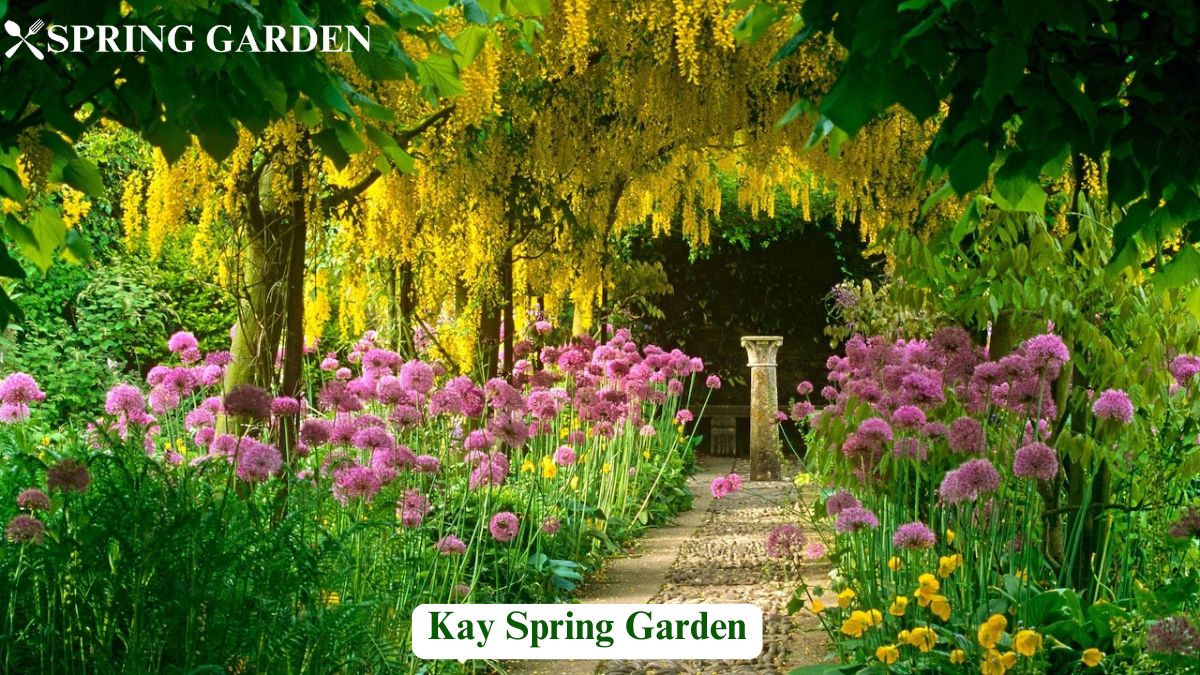Nestled in the heart of nature, Kay Spring Garden is a breath-taking escape known for its lush greenery, vibrant flowers, and serene atmosphere. This garden is not just a place for relaxation but also a hub for biodiversity, historical significance, and artistic inspiration. Whether you’re a nature lover, a photographer, or someone seeking peace, Kay Spring Garden offers something for everyone.
Visitors are drawn to its unique flora and fauna, well-designed landscapes, and seasonal festivals that bring the space to life. The garden also plays a significant role in conservation efforts, ensuring that future generations can continue to enjoy its beauty. In this article, we’ll explore the history, design, attractions, and practical travel tips for visiting Kay Spring Garden.
The History of Kay Spring Garden
The Origins and Early Development
Kay Spring Garden was founded in the early 20th century by renowned horticulturists who aimed to create a space where people could connect with nature. Inspired by European and Asian garden designs, the initial plan included a combination of ornamental flowers, water features, and walking trails.
Early records suggest that the land originally served as a private retreat before being transformed into a public garden. The founders incorporated native plants to maintain ecological balance while introducing exotic species to enhance its aesthetic appeal.
Evolution Through the Years
Over the decades, Kay Spring Garden has undergone numerous transformations. Initially a modest green space, it expanded to include themed sections such as a Japanese Zen garden, a rose pavilion, and a butterfly conservatory.
Notable additions over the years include:
- 1940s: Introduction of rare orchids
- 1960s: Installation of historical sculptures
- 1980s: Development of eco-friendly irrigation systems
- 2000s: Expansion of biodiversity zones
Historical Landmarks in the Garden
Several historical landmarks add character to Kay Spring Garden. These include:
- The Fountain of Serenity – A centerpiece designed in the 1920s.
- The Moon Bridge – Inspired by traditional Asian designs, perfect for photographs.
- Ancient Oak Tree – Over 200 years old, symbolizing strength and longevity.
These structures tell the story of the garden’s evolution and its role in the local community’s cultural heritage.
The Unique Flora and Fauna
Rare and Exotic Plants
Kay Spring Garden is home to over 500 plant species, including rare orchids, bonsai trees, and medicinal herbs. Some of the most notable plants include:
- Blue Himalayan Poppies – Known for their striking blue hue.
- Giant Water Lilies – Capable of supporting small animals.
- Ghost Orchids – Highly elusive and known for their mystique.
Wildlife and Bird Species
Birdwatchers flock to Kay Spring Garden to observe rare species. Commonly spotted birds include:
- Golden Orioles – Bright yellow birds often seen near flowering trees.
- Kingfishers – Frequent visitors near water features.
- Hummingbirds – Small, fast-moving birds that pollinate flowers.
Butterflies, dragonflies, and small mammals such as hedgehogs also inhabit the garden, creating a vibrant ecosystem.
Seasonal Changes and Blooming Patterns
Each season brings a different charm to the garden:
- Spring: Cherry blossoms and tulips bloom.
- Summer: Roses and sunflowers dominate the landscape.
- Autumn: Maple trees display stunning red and orange hues.
- Winter: Evergreen trees and frost-covered pathways offer a magical view.
Best Time to Visit and Travel Tips
Weather Conditions and Seasonal Beauty
| Season | Best Features | Recommended Attire |
| Spring | Cherry blossoms, orchids | Light layers, walking shoes |
| Summer | Sunflowers, vibrant roses | Sunglasses, sunblock |
| Autumn | Maple leaves, crisp air | Jacket, comfortable pants |
| Winter | Snow-covered pines | Warm coat, gloves |
Accommodation and Nearby Attractions
Visitors can stay in nearby hotels such as:
- Garden Inn & Suites (3 miles away, luxury stay)
- The Nature Lodge (Budget-friendly, eco-lodging)
- Riverside Cottages (Perfect for a countryside feel)
Nearby attractions include:
- The Grand Botanical Museum – Showcasing plant species from around the world.
- Kay River Park – Ideal for kayaking and picnics.
- Local Farmer’s Market – A great place to buy organic produce and souvenirs.
Transportation and Accessibility
Kay Spring Garden is accessible via:
- Public Transport: Buses and trains run frequently.
- Private Vehicles: Ample parking is available.
- Walking & Biking Trails: Ideal for eco-conscious travelers.
Wheelchair-accessible paths and seating areas ensure that everyone can enjoy the beauty of the garden.
Conclusion
Kay Spring Garden is more than just a collection of plants—it is a sanctuary of beauty, history, and tranquility. Whether you visit for relaxation, education, or artistic inspiration, this garden promises an unforgettable experience. With its well-maintained landscapes, diverse wildlife, and seasonal charm, it remains one of the most cherished nature retreats. Plan your visit today and immerse yourself in the wonders of Kay Spring Garden!
FAQs
What is the best time of year to visit Kay Spring Garden?
Spring and autumn offer the most scenic views.
Are there entrance fees or special tour packages available?
Yes, general admission is $10, and guided tours cost $25.
Is the garden wheelchair-accessible?
Yes, all main trails and viewing areas are wheelchair-friendly.
Are pets allowed in the garden?
Only service animals are permitted.
Can visitors bring outside food for picnics?
Yes, but only in designated picnic areas.
What are some must-see attractions inside the garden?
The Moon Bridge, Butterfly Conservatory, and Rose Pavilion.
Are there any night events or illuminated garden tours?
Yes, during festivals and special occasions.
How does Kay Spring Garden contribute to environmental conservation?
Through sustainable gardening and wildlife protection programs.
Can I book a wedding or private event at the garden?
Yes, with reservations.
What photography guidelines should visitors follow?
No tripods during peak hours; drone usage requires a permit.

